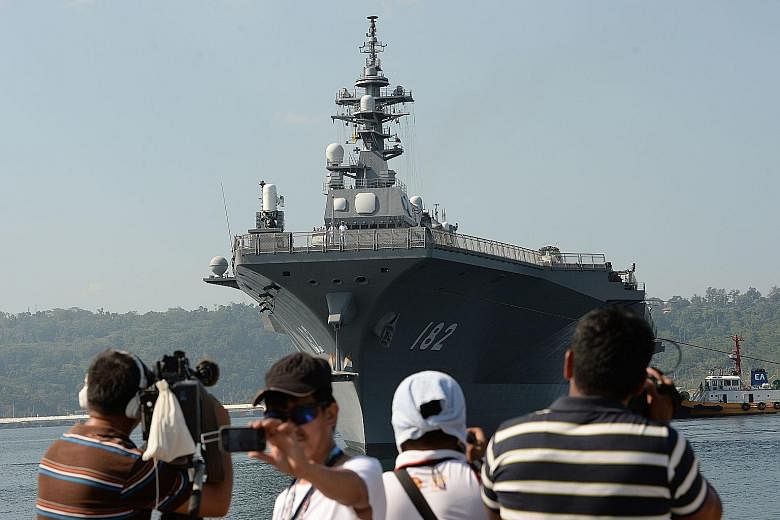SUBIC BAY • A Japanese warship sailed into a Philippine port near disputed South China Sea waters yesterday in another sign of deepening ties between the World War II foes to counter Beijing.
Tensions in the South China Sea - through which one-third of the world's oil passes - have mounted in recent years after Beijing transformed contested reefs into artificial islands capable of supporting military facilities.
The Japanese destroyer Ise docked in Subic Bay while on a "navigational training" mission, the ship's captain said. Subic lies around 200km from a Chinese-controlled shoal.
"We want to deepen the relationship with the Philippines," Captain Masaki Takada told reporters. He declined to say whether his vessel had been in contact with Chinese naval vessels during its voyage, according to Agence France-Presse.
Aside from China and the Philippines, Vietnam, Brunei, Malaysia and Taiwan also have overlapping claims in the South China Sea. Japan has its own dispute with China in the East China Sea over uninhabited islands that it administers but that are also claimed by Beijing.
In February, Tokyo agreed to supply Manila with military hardware, which officials said may include anti-submarine reconnaissance aircraft and radar technology.
Ise's Philippine visit was the third by Japanese military vessels this year.
"This visit will further strengthen our relationship with them. We have a strong relationship with them already but we want to enhance that," Filipino Navy Captain Samuel Felix told reporters.
Reports describe the Ise as an "aircraft carrier in disguise" and one of the most advanced anti-submarine warfare platforms of the Japanese military. It can carry up to 11 SH-60J/K Seahawk anti-submarine helicopters, but could also be modified to accommodate F-35B Joint Strike Fighters or MV-22 Osprey tilt-rotor aircraft.

